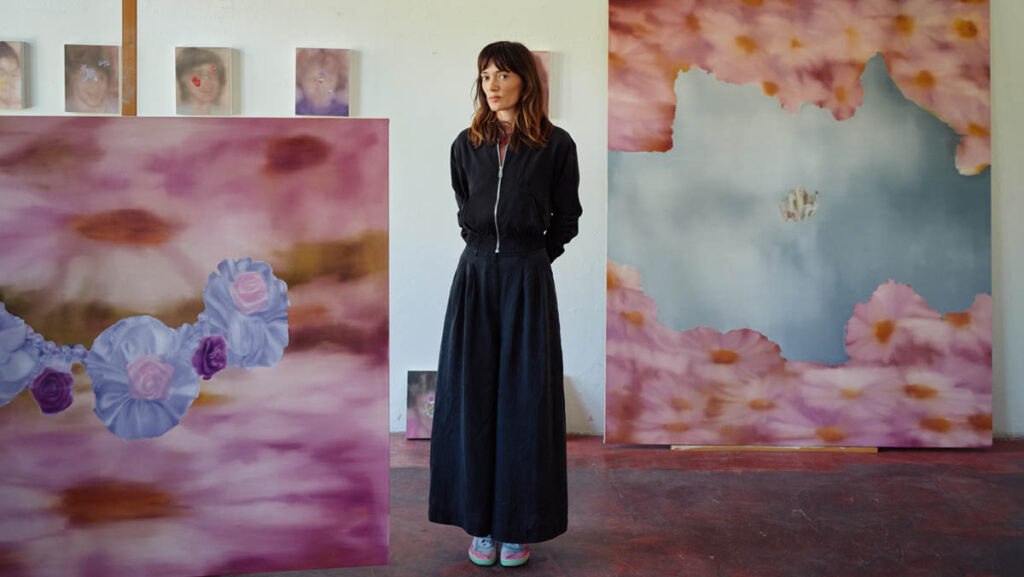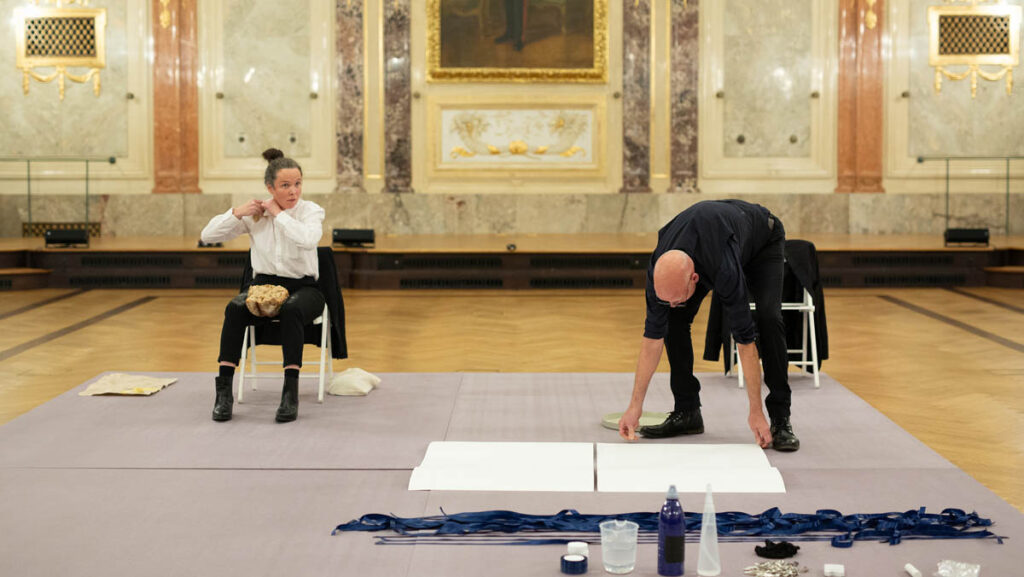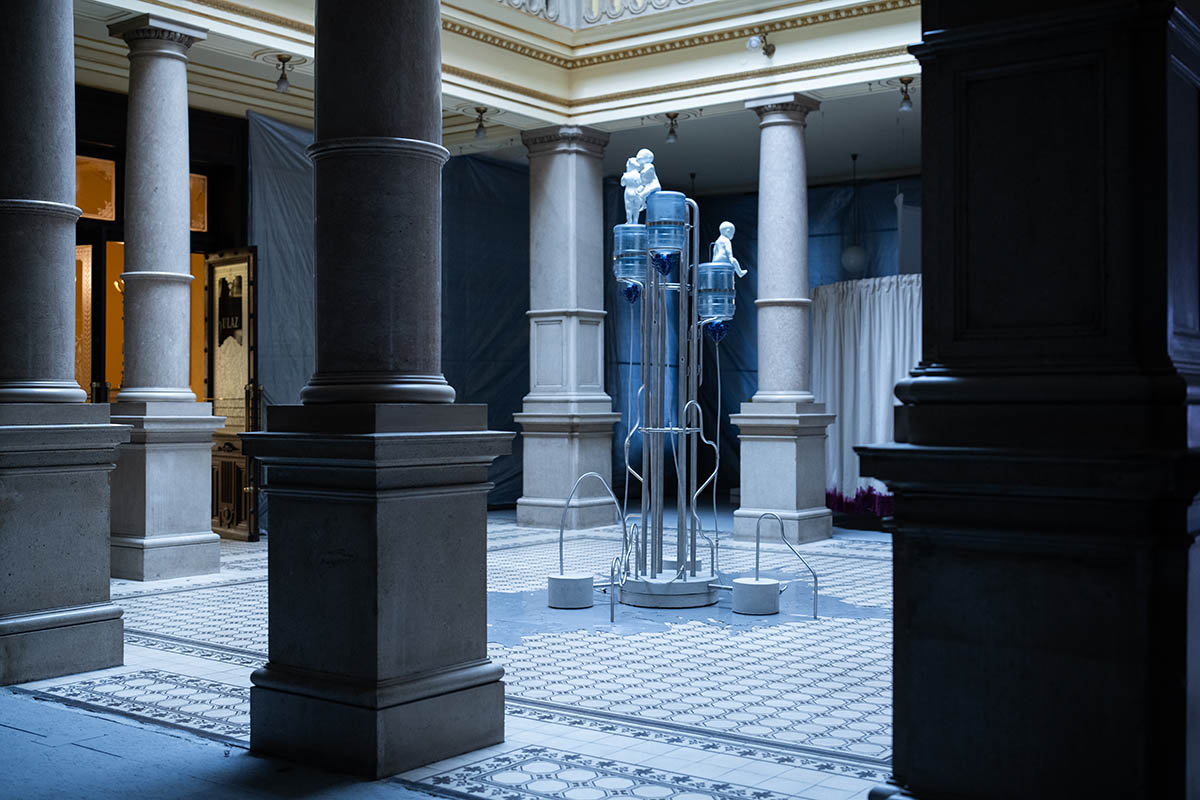
Highlighting local and global perspectives, the Salon features newly commissioned works, monumental site-specific installations, and experimental performances that challenge perception, human/non-human relationships, and the balance of stakes in contemporary life. The team of KUĆĆA answered a few questions for us on this year’s edition.
How did the idea for KUĆĆA originate? What were the main goals when you founded the collective in 2021?
After many years of working within Croatia’s independent art scene, KUĆĆA was founded as a research-based and experimental platform focused on long-term collaborations. Shortly after, we had the opportunity to curate the 36th Youth Salon – another large-scale, Croatian manifestation organized by the Croatian Association of Fine Artists (HDLU) that showcases a cross-section of emerging local practices. Coming out of COVID, the question on our minds was about the role of art in such uncertain times: could art create change, even in the smallest way? It is a somewhat naive question, but in many ways, it defined our curatorial and artistic poetics. In thinking of an answer, it took us to the figure of the parasite – an intruder, a pest that, through tiny, almost imperceptible moves, shifts broader living or non-living systems. The intruder thus became a speculative tool to think of art and curating as a soft abrasive that latches onto various systems. Specifically, we were interested in practices that think of fiction as a method to experiment with alternative ways of thinking, feeling, and being.
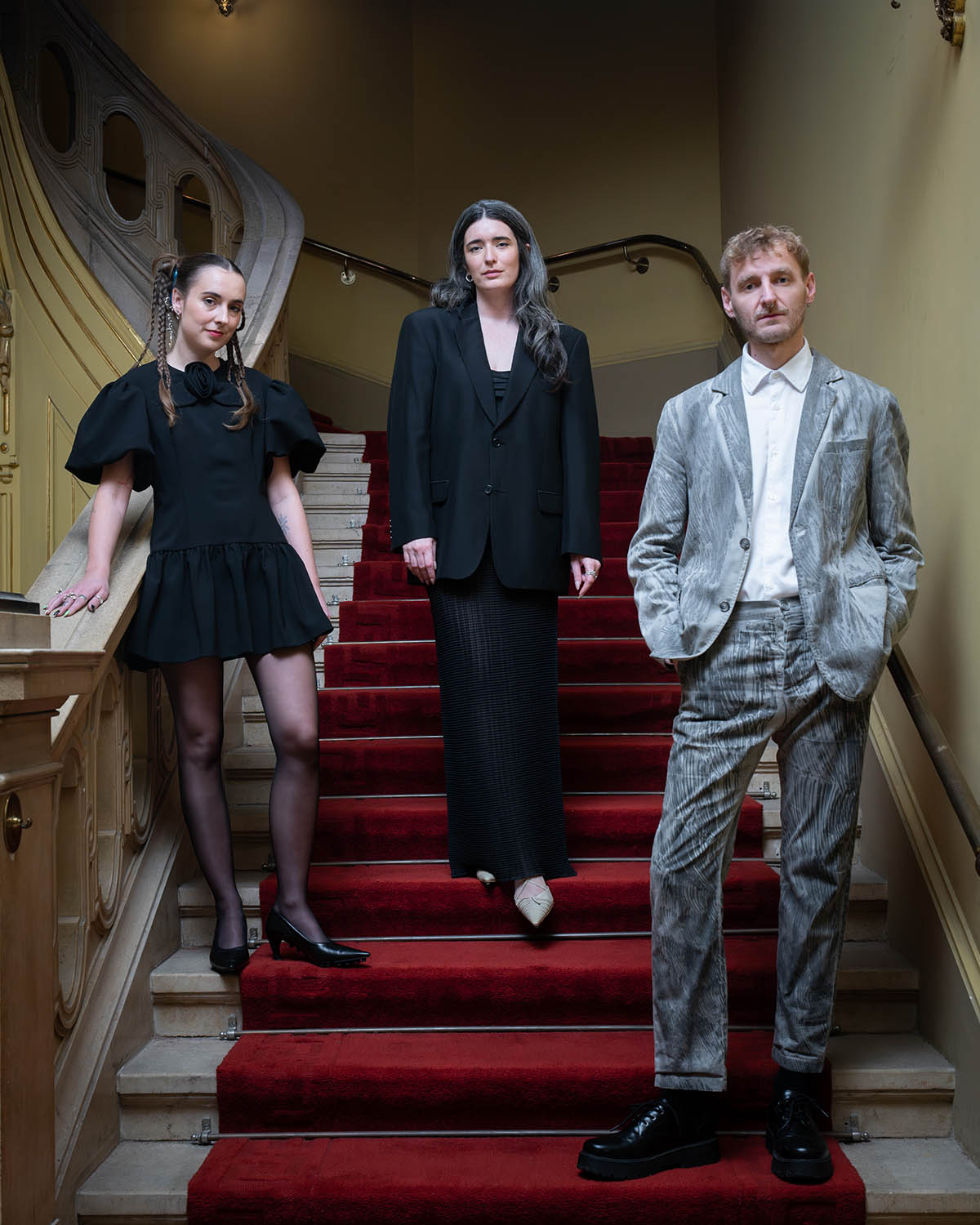
This, along with forming connections with local artists, has become the backbone of the way we approach curating: situated and relational. In 2021, we had just come up from working for many years with other cultural organisations with whom we had curated and produced large, international festivals. After being in lockdown for over a year, with KUĆĆA, we wanted to slow down, turn inward in a way, and think of spaces that are missing in the broader cultural field. Precisely, we found those spaces in emerging speculative and process-oriented practices, but also in working with local artists and institutions on ongoing, sustained cooperations. The 36th Youth Salon encompassed a group show in the Meštrović Pavilion, showcasing works of over thirty local and regional artists who responded to the topic PARASITES. With a number of those artists, we continued to work with them in the following years. To name a few: Andrej Beštak and Anja Leko – visual storytellers that use strange, emotional, at times humorous language to think through difficult personal and political realities, Robert Fenrich – interdisciplinary artist working between visual arts and fashion, his work explores the boundaries between fiction and fact, the human and non-human, or Gaia Radić – similarly, her virtual environments take to more-than-human or non-human agencies in delicate digital landscapes. It is these creative collaborations, dialogues, and ultimately friendships that shaped KUĆĆA in its formative years.
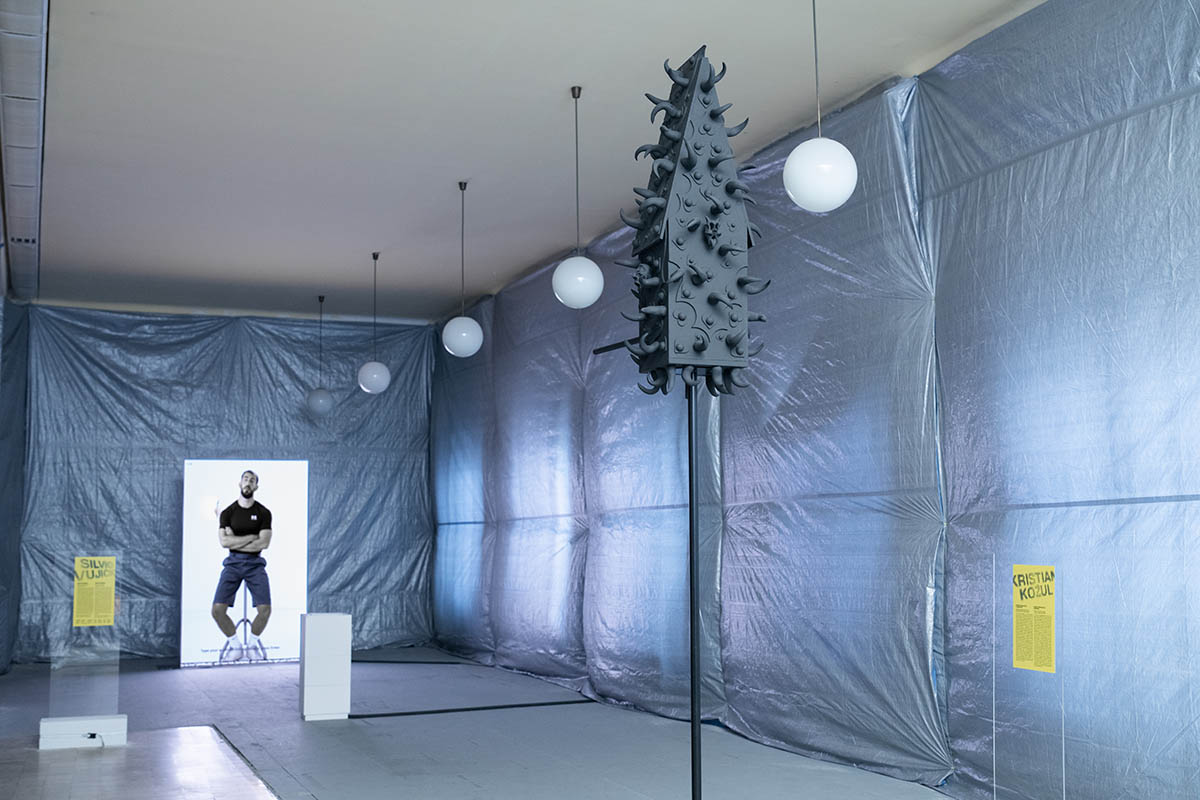
Which themes would you like to emphasize with the 60th Zagreb Salon?
Broadly put, the curatorial framework for the 60th edition of Zagreb Salon was built around contemporary regimes of uncertainties: existential threats that hover over our collective and individual lives. When we were invited to curate the next edition of Salon, we were thinking about changes in the urban landscape of the city. Following the devastating 2020 Zagreb earthquake, the capital is now covered in scaffolding due to the exhaustive process of renovation. Although implying recovery, this extra layer of fencing ushers in a sense of withdrawal from the city, between the people and the city’s urban infrastructure, which also affected the standard main venue of the Salon – the Meštrović Pavilion. In this, the city became a living image of a broader social, cultural, and political landscape rooted in a sense of unease; of an unclear, unpredictable future. At the same time, we were thinking about contemporary society’s ability to grapple with crises and became interested in the sociological shift from a society of control to a risk society. It became apparent that we are now dealing with the symptoms of modernity, with contemporary production only creating mutating uncertainties. What is present within this regime is a peculiar game-like logic to all structures, from speculative economies to our dating life: all risky games of stake and return. Interestingly, the Croatian word igra denotes simultaneously game and play, so we were interested in presenting works that recognize the logic of game in contemporary society, but also display a sort of playfulness, a frisky disregard of systems that structure contemporary life. In this, the very practical reality grounded the curatorial outline, which takes from a situated, local experience in order to think through global issues. The decentralization of the programme also played an important part, the manifestation opening often unknown city spaces to culture, becoming a month-long event that involves two group exhibitions, public interventions, performances, workshops, and lectures. The title – Choreography for the Finish Line – reflects these questions and opens a playful space for new possibilities: “choreography” as a collective effort to think and create through crisis, towards a “finish line” where the future is still open and fragile.
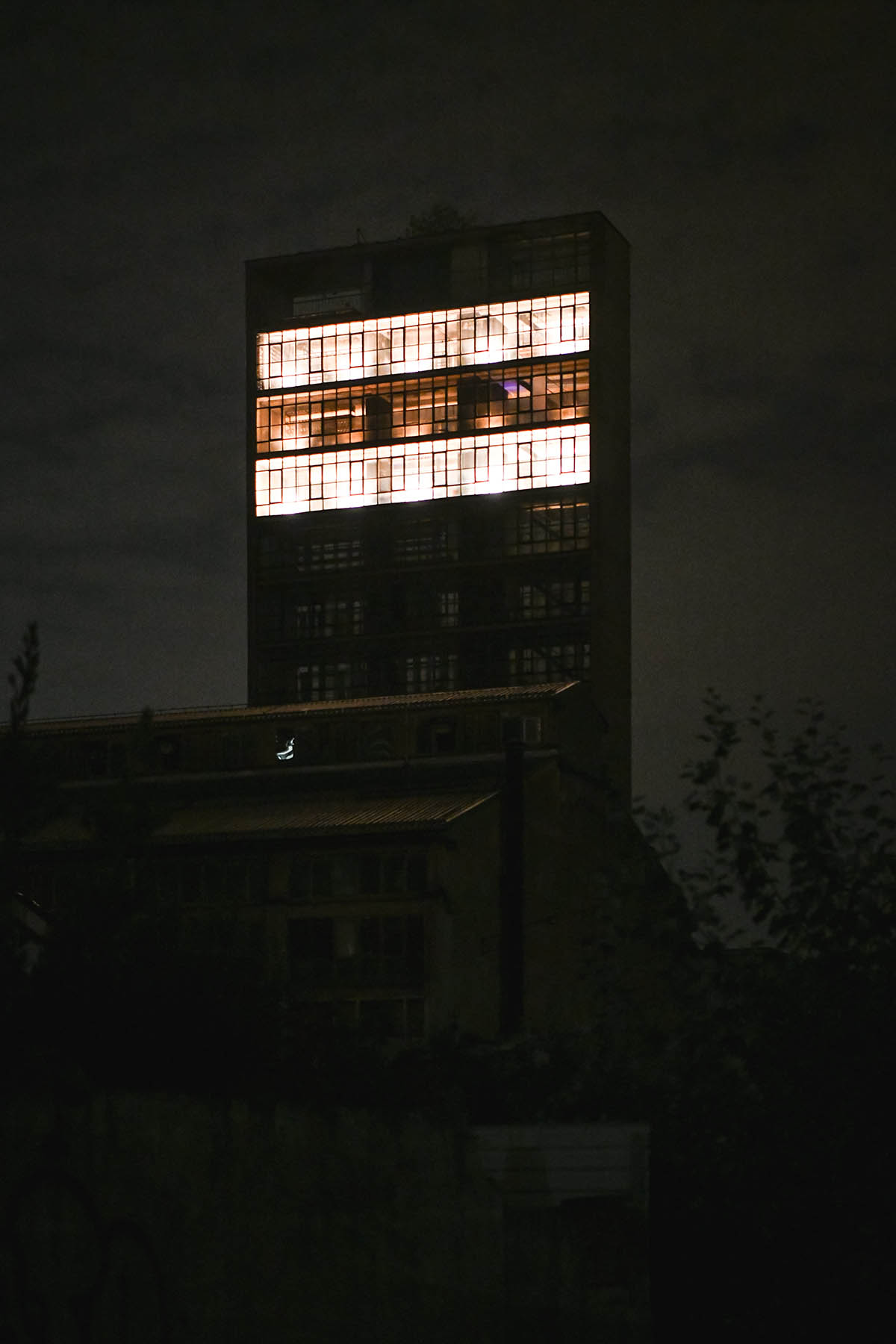
The central group exhibition is taking place in a space locally known as a former bank, which is also part of a complex belonging to Zagreb’s architectural heritage. How did you curatorially engage with these spaces?
Choreography for the Finish Line presents two group exhibitions – one in Zagreb’s first savings bank, Oktogon, and the other in a typical white cube space at Gallery SKD “Prosvjeta”. Oktogon was built between 1898 and 1900 and has, up to recently, been home to a local bank – also damaged in the earthquake, it now belongs to the National Museum of Modern Art and is due to be closed for renovation. Once again, this specific locality reflects in many ways the manifestations’ concerns: quite literally, house to overarching speculative economies connected to technological progress, while also presently being in an in-between zone, open – yet its closure is imminent. In that, there is much freedom in how to approach a space that is already coming undone on a material level. In collaboration with architect Iva Peručić, we intervened in the space using, precisely, construction material to overtake the eroding walls, to block passages, and to create new openings. The exhibition opens with a work by artists Andrej Beštak and Anja Leko – part of their new cycle, I will show you where I hide my tears, which involves another installation and performance at SKD. Here, we are met with a drinking fountain; a speculative fiction that delves into the origin of water as giver and taker of life. Merging myth and fact, the water bottles contain the amount of tears a human can produce in a year. Sorrow, grief, and sadness are met with limits, as individuals can take so much; yet connected to a wider eco-story that spreads oceans, seas, and rivers. A soft and infantile gesture was reshaped into a whimsical nursery and lullaby at the second exhibition site. Hidden in the ex-banks’ vault, the multi-channel video installation by Maja Čule and Katy Pyle also took to the sea – here to the familiar figure of the sea cucumber, an odd creature belonging to local folklore. I am Your Sea Cucumber involves local queer voices thinking through this strange-looking animal with odd anatomy that can self-regenerate as a figurehead for queer community’s power of transformation and resistance.
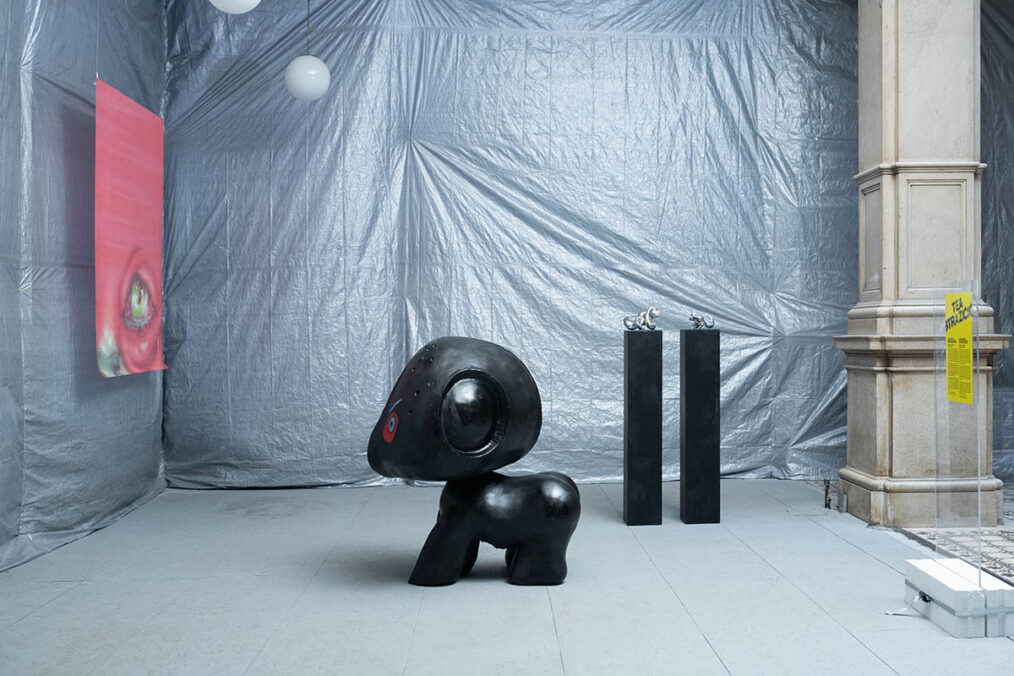
Many other artists took up the stakes offered by the advances and prevalence of digital technologies in our everyday lives. For example, Silvio Vujičić’s new interactive installation, Metaanswer, which premiered in Zagreb, appropriates the technology of large language models, but here, the infinite number of responses is generated from a personal, situated, and specific corpus. Re-telling the myth of Pythia, the artwork employs the sex industry’s superstar John Thomas to play the ancient Greek oracle with whom the visitors interact by asking him questions about the future. In line with the ancient myth, but also risk society, the solutions presented are only a possibility or a gamble, an ambiguous direction on how to move forward. Petra Mrša’s video works, Health 90 and I Can Save Her, took on the roles video games have on our personal and collective identity. The former is a documentary involving young gamers in an on- and off-line conversation about their experience playing, while the latter experiments with the affective dramaturgy of the blockbuster video game Last of Us.
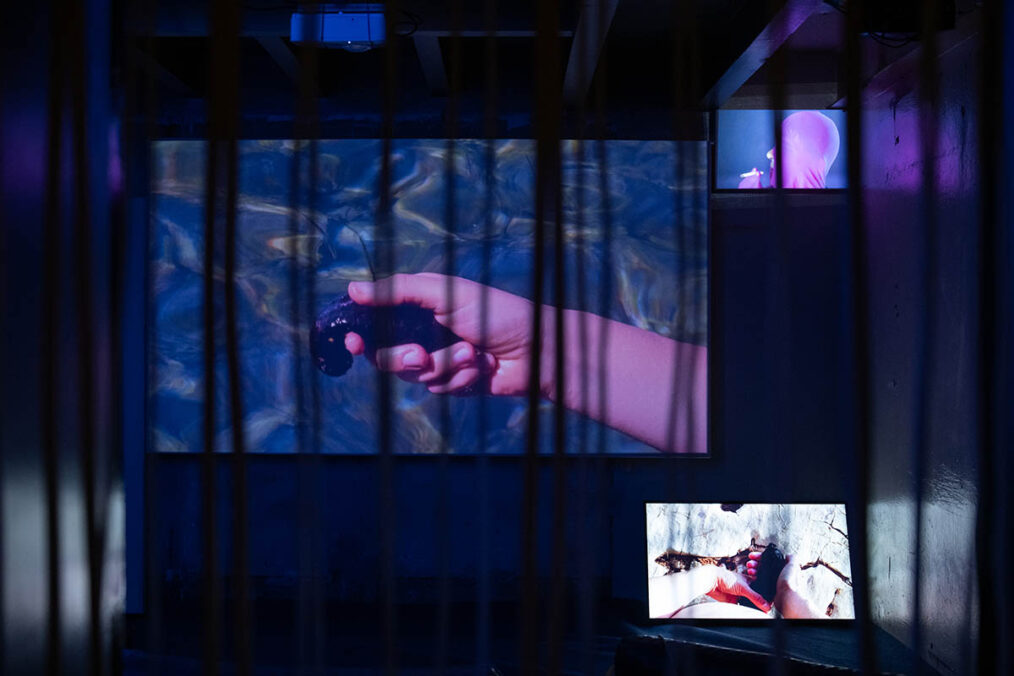
Which urban spaces in Zagreb are being used for the 60th Zagreb Salon interventions and exhibitions?
The new edition of the Zagreb salon is atypical in several ways. The manifestation usually functions in a more of a showcase format, presenting a selection of Croatian artistic production in the previous three years. This approach is not as interesting to us, so we suggested a certain pivot in how the manifestation can be approached. In line with our curatorial practice, which is heavily motivated by collaborative research and development of works, two-thirds of the featured artworks were commissioned or produced for the Salon and premiered in Zagreb as a response to the curatorial framework. Along with that, the Salon turned into a decentralized event, affirming interventions into off-site, public, and private spaces. With two group exhibitions anchoring the event, the Salon plays with scale and locality, moving from a small, almost invisible intervention in Zagreb’s trams to a monumental installation wrapping the city’s architectural marvel. When we were thinking about possible locations for the artworks, they were not perceived as coincidence or scenography, but rather set off the conversation on how the artwork and location were mutually going to inform each other.
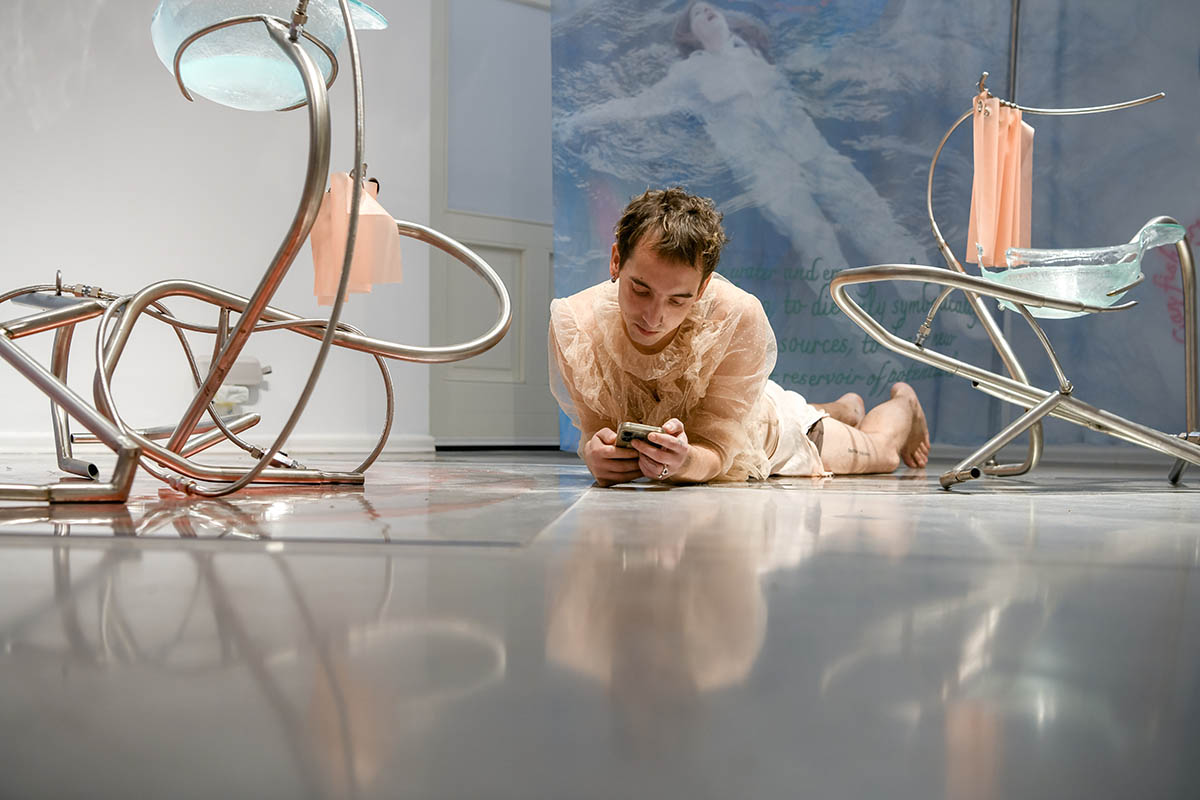
For example, as an artist interested in interrelations of natural and urban rhythms, Vladimir Novak records the sonic flow of the city and translates it into a pulsating light installation during the night – lighting up the skyscraper of an inoperative Electric Light Bulb Factory (TEŽ – Tvornica električnih žarulja). Although large in volume, the intervention actually works with subtlety, not demanding attention and perhaps misdirecting those observing it, confusing them about the productivity of the skyscraper. On the other hand, some of the interventions in public took on the form of a discursive programme. Triggered by the fact that she works in a studio space previously used by Croatian visual artist, filmmaker, and actress Jagoda Kaloper, Nina Kurtela has been engaging with Kaloper’s neglected heritage. Taking centre stage in the Academy of Fine Arts’ courtyard is a life-size metal framework that traces the outline of Jagoda Kaloper’s former studio, moving a private room into a public one. It becomes a site of leisure and a meeting place for artistic, research, performative, intuitive, and ritual practices, without a linear or strictly structured format. Overall, with over 15 sites, Zagreb Salon moves from Zagreb’s vehicles and the famous Dolac market to an upper-town St. George’s Chapel and an underground tunnel built during World War II.
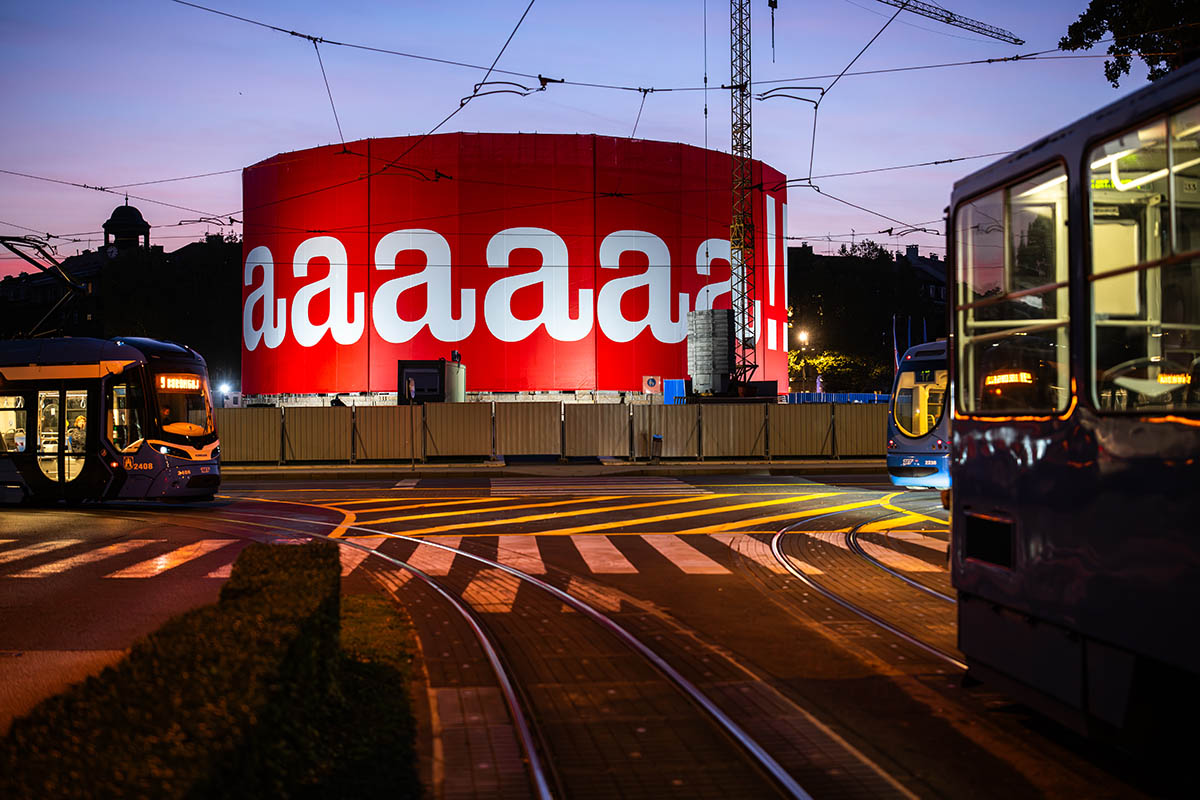
Could you please tell me more about Nora Turato’s work Aaaaaaaaaaaaaaa!!!, and its significance for the 60th Zagreb Salon?
The 60th Zagreb Salon is also a story of information and data. In a risk society, there is a process of overwhelming evolution of knowledge, which in turn creates more risks. Information and data, which are anyway a result of bias, are constantly collected to understand the balance between investments and profits, a logic that is applied in all spheres of our lives. And it was important to us to stress the relentless presence of this logic. To us, Nora Turato seemed like an inevitable ally in this argument, given her work with language. She executed a site-specific intervention on the rim of the Meštrović Pavilion, seat of the Croatian Association of Fine Artists which is closed for renovation, and a monumental conclusion to the artist’s „pool7“ series which has begun a year ago with a mural of the same name at Kunsthalle Wien in Vienna and the exhibition „I Hear You, I Hear You“ at the Stedelijk Museum in Amsterdam. A raw vocal expression, Aaaaaaaaaaaaaaa!!! was inscribed on the pavilion, with an audio recording that can be heard once a day, precisely at noon, accompanying the work. Her use of communication that avoids exact language and which considers how we communicate through our bodies, voice, or gestures, felt as a crucial polarity to a utilitarian view of information in a risk society.
What role does research play in your exhibitions and programs, such as LIVING ROOM?
The crux of our programming, whether in KUĆĆA or within manifestations we are invited to curate, is collaborative research. LIVING ROOM is an experimental residency programme, an open-ended research and production project aimed at a younger generation of Croatian artists. Circumventing the logic of artistic production imposed by yearly funding cycles, it allows for a slower research and production process. This year’s resident, Mia Ribić, is presenting her newest project, Turboigranka, a part-club, part-stage, and part-laboratory event for Zagreb Salon. Positioning herself within a discourse on Turbofolk, a popular music genre perceived as an ideologically charged and lowbrow cultural product, Ribić brings together emerging authors, playwrights, visual artists, vocalists, and fashion designers to explore its peculiar aesthetic, musical, and lyrical qualities. It was a compelling and motivating process to engage with Mia in the development of the work, as the subject of the work comes with an abundance of cultural, aesthetic, and political implications, so it was a matter of mapping the possible routes of the work and mutually deciding on different stages of its development, which will continue in 2026.
60th Zagreb Salon
7. – 31.10.2025
KUĆĆA – www.kucca.hr, www.instagram.com/kuccccccca/
KUĆĆA is a curatorial collective formed in 2021 to create a collaborative space for artists, curators, theoreticians, and other individuals and organizations who work in fields of process-based, experimental, and investigative artistic practices. KUĆĆA is occupied by curators Jurica Mlinarec, Klara Petrović, and Luja Šimunović in Zagreb, Croatia. They realized the 36th Youth Salon: PARASITES (2022), the 63rd Poreč annale: They told me that the planet has nerve endings (2023), the experimental residential program LIVING ROOM (2021 — today), Takeover of the 37th edition of Youth Salon (2024), international project Identity Crisis Network (2024 – 2025), as well as a series of exhibition programs in KUĆĆA and abroad. The work of KUĆĆA was also presented in international publications such as Fluid Materialities (Germany, 2025), ETC. magazine (Slovenia, 2023), and KUNSTFORUM International (Germany, 2023).




